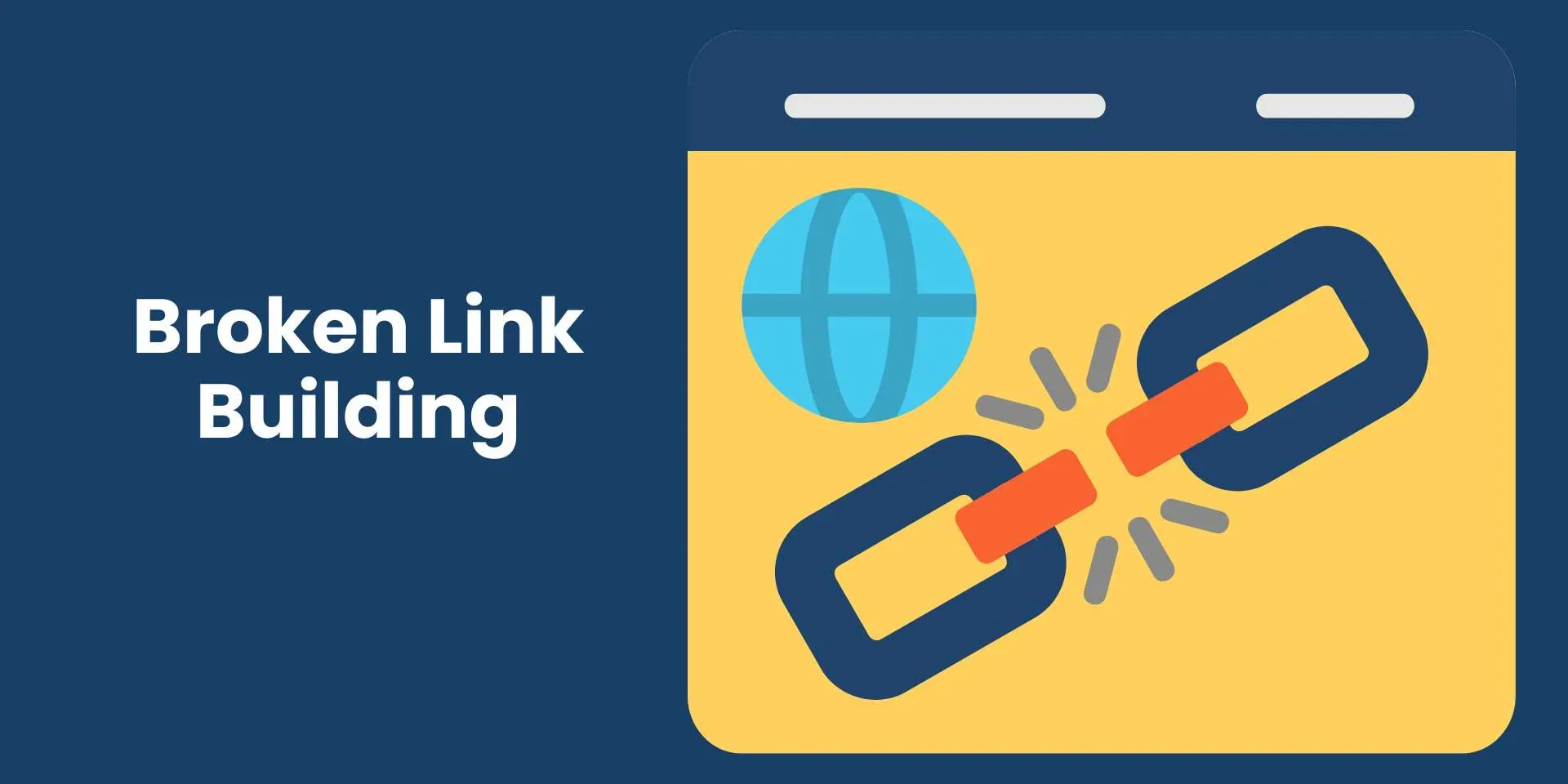
Steal High-Authority Backlinks Before They’re Gone Proven 2025 SEO Hack!
Unlock High-Authority Links with Broken Link Building!
If your SEO efforts aren’t delivering the organic traffic you expect, broken link building might be the hidden strategy you’re missing. This low-effort, high-reward tactic allows you to earn powerful backlinks by replacing dead links on other websites with your existing content. Every broken backlink represents lost link equity-and an opportunity for you to claim it. In 2025, with search engines prioritizing authority and user experience, broken link building strategies are more valuable than ever for boosting rankings and domain authority.
This comprehensive guide reveals how to find broken links on competitor sites, resource pages, and even Wikipedia, pitch your content as a superior replacement, and secure high-value backlinks-all without creating new content from scratch. From tools to outreach templates, you’ll learn a proven process to turn broken links into SEO gold.
Whether you're a beginner or seasoned SEO professional, this broken link building playbook will help you reclaim wasted link equity, improve site authority, and drive sustainable traffic growth in a privacy-first, AI-driven search landscape.

What Is Broken Link Building and Why It Works
Broken link building is the process of identifying dead or broken external links on third-party websites and offering your own high-quality, relevant content as a replacement. It’s a white-hat SEO tactic that benefits both parties: you gain a valuable backlink, and the site owner improves user experience by fixing a broken resource.
Links break for many reasons-pages get deleted, URLs change during site migrations, domains expire, or content is simply removed. Each broken link creates a 404 error, frustrating users and wasting link equity that could boost SEO performance. By stepping in with a better alternative, you help webmasters maintain site quality while earning a contextual, high-authority backlink.
Unlike guest posting or digital PR, broken link building leverages content you already have. It’s efficient, scalable, and aligns with Google’s focus on E-E-A-T and user experience. When done correctly, it delivers long-term SEO value with minimal ongoing effort.
How to Find Broken Link Opportunities
Finding broken links is the foundation of successful broken link building. Start by using SEO tools to scan websites in your niche. Here are the most effective methods:
- Competitor Analysis: Enter a competitor’s domain into Ahrefs Site Explorer or Semrush. Navigate to the “Best by Links” or “Backlinks” report, then filter for “404 not found” pages. This reveals broken pages that still attract backlinks.
- Resource Page Targeting: Search Google for
inurl:resources + "your keyword"to find curated lists of tools, guides, or statistics. Manually check linked URLs-many will be broken. - Wikipedia Dead Links: Use the search query
site:en.wikipedia.org "your keyword" "dead link"to find articles with broken citations. Use the Wayback Machine to view archived versions and assess original content. - Expired Domains: Visit ExpiredDomains.net and filter for deleted domains in your niche with strong backlink profiles. Use Ahrefs to see which pages had the most referring domains.
Tools like Screaming Frog, Ubersuggest, and Sitebulb can crawl entire sites to detect 404 errors at scale. Focus on pages with high domain authority (DA 50+) and multiple referring domains for maximum impact.
Evaluate Broken Link Prospects Before Outreach
Not all broken links are worth pursuing. Before investing time in outreach, evaluate each opportunity using these criteria:
- Relevance: Does the referring page align with your niche and content?
- Authority: Is the domain rating (DR) or domain authority (DA) above 40?
- Traffic Potential: Does the page still rank or receive organic traffic?
- Link Context: Was the original link contextual (in content) or navigational?
- Replacement Fit: Do you have (or can create) content that matches or exceeds the original?
Use the Wayback Machine to analyze archived versions of broken pages. Identify what made the original resource link-worthy-statistics, tools, guides, or unique insights-and ensure your replacement delivers equal or greater value.
Craft Winning Broken Link Outreach Emails
Outreach is where most broken link building campaigns succeed or fail. Your email must be concise, helpful, and human. Follow this proven template structure:
- Subject Line: “Broken Link on [Page Title] – Quick Fix Suggestion”
- Greeting: Personalize with the recipient’s name (find via LinkedIn or About page).
- Value First: “I was reading your excellent guide on [topic] and noticed a broken link to [original URL].”
- Solution: “I recently published an updated resource that covers the same topic in more detail: [Your URL]”
- Call to Action: “Would you consider updating the link? It would help your readers access current information.”
- Closing: Thank them and offer to answer questions.
Keep emails under 100 words. Attach a screenshot of the broken link if possible. Follow up once after 5–7 days if no response. Personalization and brevity dramatically improve reply rates.
Advanced Tactics: Wikipedia and Guest Content
Take your broken link building to the next level with these advanced strategies:
- Wikipedia Citation Replacement: Wikipedia’s “dead link” tags mark broken citations. Replace them ethically with your content if it’s factual, well-sourced, and non-promotional. While nofollow, these links drive visibility and secondary backlinks.
- Guest Content Replacement: When direct pitches fail, publish a superior guide on a trusted third-party site (e.g., Forbes, Entrepreneur). Then pitch that article as the replacement-it feels less self-promotional to webmasters.
- Expired Domain Harvesting: Use ExpiredDomains.net to find lapsed domains with strong backlink profiles. Target sites still linking to defunct pages and offer your content as a modern alternative.
These methods expand your reach and increase success rates, especially in competitive niches.
Create or Repurpose Replacement Content
The best replacement content surpasses the original in depth, accuracy, and user experience. Follow these steps:
- Use the Wayback Machine to study the broken page’s structure and intent.
- Update statistics, examples, and visuals to reflect current trends.
- Improve readability with scannable headers, bullet points, and visuals.
- Add unique value-original research, expert quotes, or interactive elements.
- Optimize on-page SEO: title, meta description, headers, and internal links.
If you lack suitable content, repurpose blog posts, case studies, or data reports into comprehensive guides. Tools like Canva and Tableau can enhance visual appeal, increasing linkability.
Scale Your Broken Link Building Campaign
To scale broken link building efficiently:
- Build a spreadsheet tracking prospects, DR, contact info, and status.
- Use email outreach tools like Mailshake or Woodpecker for follow-ups.
- Train a VA to find broken links and draft initial emails.
- Set monthly targets: 50 outreach emails → 5–10 new backlinks.
- Monitor results with Google Search Console and Ahrefs.
Consistency compounds. Even 5 new high-authority links per month can significantly boost domain rating and organic traffic over time.
Common Mistakes to Avoid
Avoid these pitfalls that derail broken link building campaigns:
- Pitching irrelevant or low-quality content.
- Using generic, spammy outreach templates.
- Targeting low-authority or penalized domains.
- Failing to follow up after initial outreach.
- Ignoring mobile optimization and page speed.
Quality over quantity ensures sustainable results and protects your domain from penalties.
The Future of Broken Link Building in 2025
As AI search and user experience signals gain prominence, broken link building remains a future-proof strategy. Google’s focus on helpful content and E-E-A-T rewards sites that fix user pain points-including broken links. By maintaining a clean link profile and earning contextual backlinks, you align with core algorithm priorities.
Combine broken link building with internal linking, technical SEO, and content clusters for maximum impact. The result? A robust backlink profile that drives rankings, traffic, and conversions for years to come.
Conclusion: Start Building Links Today
Broken link building is one of the most effective, ethical, and scalable link acquisition strategies in 2025. By identifying dead links, crafting helpful outreach, and offering superior replacement content, you can earn high-authority backlinks that boost rankings and domain authority-all using content you already own.
Begin with a competitor audit, refine your outreach, and track results monthly. With consistency and attention to quality, broken link building will become a cornerstone of your SEO success. Start reclaiming lost link equity today-and watch your organic traffic soar.
Comment / Reply From
Popular Posts
Newsletter
Subscribe to our mailing list to get the new updates!





